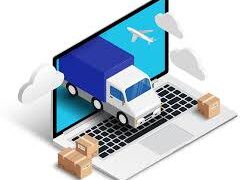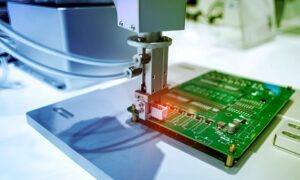Enterprises are constantly seeking ways to streamline operations, reduce errors, and improve efficiency. One critical area that often demands significant attention is payment reconciliation. Manual payment reconciliation processes are not only time-consuming but also prone to human error, which can lead to financial discrepancies and operational inefficiencies. This is where automating payment reconciliation in enterprise systems comes into play. By leveraging automation, businesses can transform their financial operations, ensuring accuracy, speed, and scalability.
What is Payment Reconciliation?
Payment reconciliation is the process of matching transactions recorded in an organization’s accounting system with those in bank statements or other financial records. This process ensures that all payments are accounted for and that there are no discrepancies between internal records and external sources. Traditionally, this has been a manual task, requiring finance teams to sift through vast amounts of data, cross-checking entries, and resolving mismatches. However, as businesses grow and transaction volumes increase, manual reconciliation becomes increasingly impractical.
The Need for Automation in Payment Reconciliation
The complexity of modern financial systems, coupled with the sheer volume of transactions, makes manual reconciliation a daunting task. Here are some key reasons why automation is essential:
Reducing Human Error
Manual reconciliation is prone to errors, such as data entry mistakes or overlooked transactions. These errors can lead to financial inaccuracies, which may have serious consequences for an organization. Automation minimizes the risk of human error by ensuring that transactions are matched accurately and consistently.
Saving Time and Resources
Manual reconciliation can take hours, if not days, depending on the volume of transactions. By automating the process, businesses can significantly reduce the time spent on reconciliation, allowing finance teams to focus on more strategic tasks.
Improving Scalability
As businesses grow, so does the volume of transactions. Manual reconciliation processes struggle to keep up with this growth, often leading to bottlenecks. Automated systems, on the other hand, can handle large volumes of data effortlessly, ensuring scalability.
Enhancing Compliance and Auditability
Automated reconciliation systems provide a clear audit trail, making it easier for businesses to comply with regulatory requirements. This transparency is crucial for maintaining trust with stakeholders and avoiding legal complications.
Key Features of Automated Payment Reconciliation Systems
To fully understand the benefits of automation, it’s important to explore the key features that make these systems effective:
Real-Time Data Matching
Automated systems can match transactions in real-time, ensuring that discrepancies are identified and resolved quickly. This real-time capability is particularly valuable for businesses that operate in dynamic environments.
Integration with Existing Systems
A robust automated reconciliation system should seamlessly integrate with existing enterprise resource planning (ERP) systems, banking platforms, and other financial tools. This integration ensures that data flows smoothly between systems, reducing the need for manual intervention.
Advanced Analytics and Reporting
Automated systems often come with built-in analytics and reporting tools. These features provide valuable insights into financial performance, helping businesses make data-driven decisions.
Customizable Rules and Workflows
Every business has unique reconciliation needs. Automated systems allow organizations to set up customizable rules and workflows, ensuring that the process aligns with their specific requirements.
Challenges of Automating Payment Reconciliation
While the benefits of automation are clear, implementing an automated payment reconciliation system is not without its challenges. Here are some common obstacles businesses may face:
Initial Setup Costs
Implementing an automated system requires an upfront investment in software, hardware, and training. For some businesses, these costs may be a barrier to adoption.
Data Quality Issues
Automation relies on accurate and consistent data. If the underlying data is flawed, the automated system may produce incorrect results. Ensuring data quality is therefore a critical step in the implementation process.
Resistance to Change
Employees who are accustomed to manual processes may resist the transition to automation. Overcoming this resistance requires effective change management and clear communication about the benefits of automation.
Technical Complexity
Automated reconciliation systems can be technically complex, requiring specialized knowledge to set up and maintain. Businesses may need to invest in training or hire additional staff to manage the system effectively.
Best Practices for Implementing Automated Payment Reconciliation
To maximize the benefits of automation, businesses should follow these best practices:
Conduct a Thorough Needs Assessment
Before implementing an automated system, it’s important to assess your organization’s specific needs. This includes evaluating the volume of transactions, the complexity of your financial systems, and any unique requirements.
Choose the Right Solution
Not all automated reconciliation systems are created equal. It’s essential to choose a solution that aligns with your business needs and integrates seamlessly with your existing systems.
Ensure Data Quality
As mentioned earlier, data quality is critical for successful automation. Before implementing the system, take steps to clean and standardize your data.
Train Your Team
Providing comprehensive training to your finance team is crucial for a smooth transition to automation. Ensure that employees understand how to use the new system and are aware of its benefits.
Monitor and Optimize
Once the system is in place, continuously monitor its performance and make adjustments as needed. This will help you identify any issues early and ensure that the system is delivering the expected results.
The Coming of Payment Reconciliation
The future of payment reconciliation looks promising. Emerging technologies such as artificial intelligence (AI) and machine learning (ML) are set to revolutionize the process further. These technologies can enhance the accuracy of data matching, predict potential discrepancies, and provide even deeper insights into financial performance.
Moreover, the integration of blockchain technology could bring unprecedented transparency and security to payment reconciliation. By creating an immutable ledger of transactions, blockchain can eliminate the need for manual verification, further streamlining the process.
Conclusion
Automating payment reconciliation in enterprise systems is no longer a luxury but a necessity for businesses looking to stay competitive in today’s fast-paced world. By reducing errors, saving time, and improving scalability, automation can transform financial operations and drive business growth. While there are challenges to overcome, the benefits far outweigh the costs, making it a worthwhile investment for any organization.
As you consider implementing an automated payment reconciliation system, remember to assess your needs, choose the right solution, and invest in training and data quality. By following these best practices, you can ensure a smooth transition and unlock the full potential of automation. The future of payment reconciliation is here, and it’s time to embrace it.



































